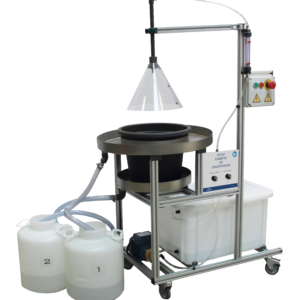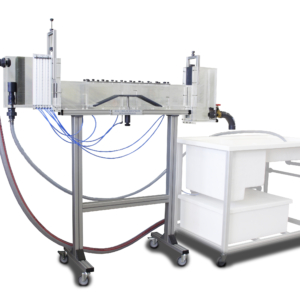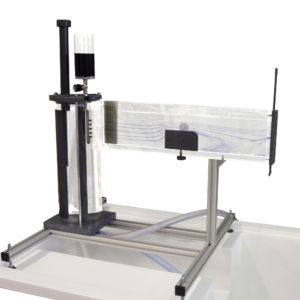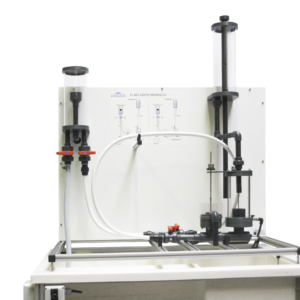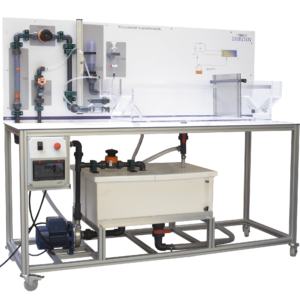HD 10.1 – Demonstration Lisimeter
With the HD 10.1 equipment, it is a question of knowing the water retention capacity of a soil using the hydrological balance, differentiating each one of its elements.
Description
By means of the simulation of a rain on a soil, the following elements of the hydrological cycle are distinguished:
- Surface runoff: Once the soil is flooded, surface runoff begins, collecting it externally and proceeding to its measurement by evaluating its quantity in volume.
- Subsurface and subterranean runoff: The infiltrated water is collected by the bottom of the container, measuring this runoff by its volume.
- The rest of the water is absorbed by the soil that can be known by performing a weighing of the same before the rain and another after. The difference corresponds to the volume of stored water.
By establishing the equality of volumes, the values of surface runoff, ground runoff and soil runoff are known.
The equipment has a digital balance on which the floor model is set, so that the weight variation can be continuously displayed.
Learning Objectives
- Separation of the components of the hydrological cycle by volume or height.
- Soil retention capacity.
- For a short duration of practice, evaporations are neglected but this duration can be prolonged and obtatin the soil evaporation (a thermometer is required to carry out this practice).
- For a long duration of practice placing a plant or crop, you can determine the evapotranspiration and the point of wilt.
Technical Data
- Peripheral drive pump (which simulates precipitated rain volume on the floor model):
- Maximum flow: 10 l/min
- H max: 42 m a 50Hz
- Power absorbed 0,25CV
- Tanks
- Test container 50l
- Stackable tank 12l
- Drum 20l
- Flowmeter (to measure the discharged water ): 16-160l/h
- Surface excess flow rate measurement system.
- Infiltrated water measurement system.
- Digital scale 60Kgx2g
Requirements
- Input: 230V/50Hz.


